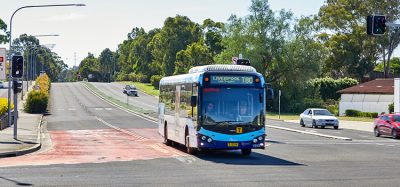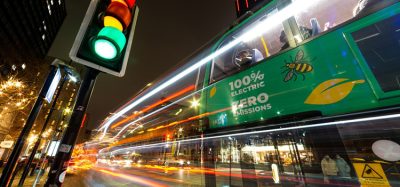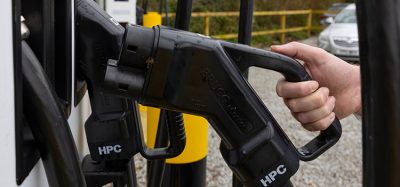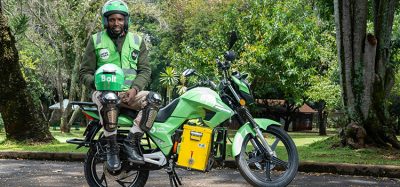Copenhagen Metro – transforming inner-city travel
- Like
- Digg
- Del
- Tumblr
- VKontakte
- Buffer
- Love This
- Odnoklassniki
- Meneame
- Blogger
- Amazon
- Yahoo Mail
- Gmail
- AOL
- Newsvine
- HackerNews
- Evernote
- MySpace
- Mail.ru
- Viadeo
- Line
- Comments
- Yummly
- SMS
- Viber
- Telegram
- Subscribe
- Skype
- Facebook Messenger
- Kakao
- LiveJournal
- Yammer
- Edgar
- Fintel
- Mix
- Instapaper
- Copy Link
Posted: 16 February 2014 | Chris Cox | No comments yet
The Copenhagen Metro has been operating for over a decade and although still regarded as a young system, it has had a sizable influence both within the capital and internationally as a model for other cities planning transit systems. After winning several industry awards, we see the continuous focus on the passenger needs as being an essential ingredient for continued success and an emphasis on exploiting the available technology to do this.
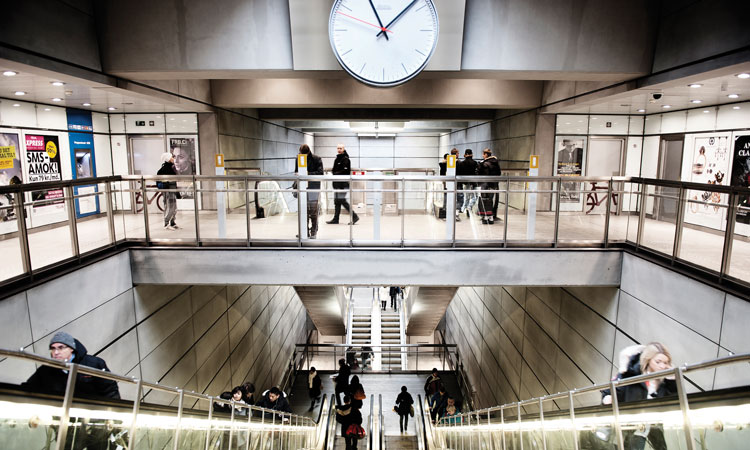

History
The Copenhagen Metro concept goes back to the early-1990s when the plans for a metro construction were being considered. Following the agreement on an overall master plan and an international tender process, ground was broken in 1997 and the first phase was opened to revenue service in 2002. Subsequent extensions were unveiled in the following years culminating with the opening of the airport service in 2007 which marked the completion of the Metro project. The Metro now has 22 stations over 21km of line and a fleet of 34 vehicles each 39m-long. Initial 24/7 operation limited to the weekends was extended to the entire week following a period of consolidation after the opening of the last extension. Since then, the Metro has been providing a virtually continuous service for Copenhageners with an ‘always on’ concept, where the presumption by users is they can just turn up, day or night, and expect a reasonably short wait for the next train without needing to consider timetables or schedules and have a consistently short journey time. We currently operate a two minute headway service in peak times, three minutes in off-peak times and 15 minutes (or thereabouts) during the night.
The Metro has additionally offered a catalyst for regeneration, opening-up an entirely new area of the city to development and providing a rapid connection with the city centre and other transport hubs as well as major work and study centres around the city.
Design
Denmark is justly famed for its designer’s skills and for the value that is placed on good design. The Metro reflects this design emphasis. The deep station’s layout ensures that natural daylight (augmented with artificial lights) can reach the platform despite the compact dimensions needed to fit into Copenhagen’s narrow streets, particularly in the historic centre. Architectural finishes have also been carefully considered to provide a uniform and consistent ambience. Exacting industrial design principles have extended to technical systems and the trains to provide a uniformly high standard to fit and finish further enhancing the passengers travel experience. The success of this implementation may be judged by the number of other mini metro projects that have been inspired by the Copenhagen model.
A fundamental part of the concept was the idea of a small train offering a short headway service. Offering an ultimate design capacity of 12,000 pphpd1, flexibility and responsiveness were key criteria, so given the relatively high labour costs in the developed world and with the railway supply industry heading toward increasing automation, the choice was an easy one to adopt a driverless solution.
Operational reliability was also a critical consideration, so as far as was practicable a dual redundant design philosophy was adopted, ensuring that in the event of an equipment failure, there was standby systems available to ensure continued operation of the trains.
Safety certification
Because there were no appropriate national standards applicable for the design and operation of such a system, the German light-rail standard BoStrab and the regulations for Driverless Operation (FÖF) together with other generally accepted rules of technology were adopted. These, with the NFPA 130 standard extant at the time covering fire safety in passenger rail systems formed the standards basis.
As the first driverless system to be built in Denmark, safety considerations were naturally paramount and there was a lot of focus on the safety management from the initial design right through to the operation. The (at the time) preliminary Cenelec standards were the basis for the safety certification which was carried out by an independent safety assessor using a risk based approach, in what has now become the standard model for new systems. All of the safety software for the signalling interlockings and Automatic Train Protection equipment was developed or rewritten in compliance with EN 50128.
Driverless
Selection of the mini metro driverless solution was a daring decision given that this was a major departure from the traditional forms of rail transport already operating in Denmark. However, decoupling the staff from the trains allows a flexible demand-driven and not resource-driven service level to be provided. This has been repeatedly demonstrated in terms of augmenting, reforming, or economising the service levels to align with the demand level. Another advantage is that, for a given level of staff, exposure to customers is increased and the dehumanising effects of employing technology to operate the system are offset.
With the absence of staff on the trains there is an increased reliance on the vehicle to perform well and minimise the frequency of staff having to go out to stalled trains to deal with technical problems because of the delays this causes.
Operations
Apart from the driverless aspect, the operations and maintenance organisation is configured in a traditional way. Like other urban transit systems, the pressure for track time to carry out maintenance is considerable. Although the system operates on a 24/7/365 basis, bi-directional single-track operation allows sections of the railway to be maintained while continuing to operate a 15 minute or so headway. The advantages of driverless operation make this reconfiguration of the service pattern easy and quick.
The operation and maintenance organisation consists of approximately 90 stewards and a similar number of technical staff. In addition there is approximately 30 control room staff, with at least five on duty during the morning and afternoon peaks. Stewards are allocated a section of line for their shift, usually about three stations, within which to patrol and carry out customer assistance and ticket inspection. Proper positioning, avoiding congregations of Stewards is essential to ensure a short reaction time of less than 10 minutes to reach the site of an incident, so careful dispersal particularly at shift changeover is critical.
Commissioning and start-up
The transition from testing to trial running to revenue service with a driverless system is more challenging because there are the added complexities of managing Stewards, handling failures as well as dealing with learning how to use the technical systems effectively. During the initial stages of revenue service, a decision was made to place Stewards on vehicles so that passengers would be confident that failures could be quickly recovered. The service organisation was boosted by additional Guides who focused on Customer Service tasks relieving the Stewards to focus on dealing with the technical aspects of the job particularly during failure recovery. As the system bedded down and reliability grew, the need for the Guides was reduced and the current configuration was adopted, nevertheless the process was evolutionary and continuous evaluation of the performance of the organisation was carried out to converge of the current arrangement.
Energy consumption
Although already comparatively energy efficient, the Metro electricity consumption is increasingly under focus, as we are one of the major consumers in the city. Driverless systems offer special advantages for saving on traction power since the vehicles are driven in a precise and repeatable way, so there is a simple trade-off between travel time or capacity and energy consumption. Inverters fitted at the stations recover traction power and return it to the network, but because much of the recovered power is already transferred between vehicles, the actual recovery is a low 5%, so savings are relatively limited.
The method of calculation of the service availability is based upon a given headway for a particular hour of the day. The service level transitions can result in an oversupply of capacity which can be considered wasted. Optimising the schedule to reduce as much as possible the number of scheduled empty train movements noticeably reduced the traction energy requirement and highlights the benefit of having a driverless system so that capacity provision can be adjusted to closely match the needed demand without other constraints.
Traction power is only half of the total consumption however; station power requirements for escalators, elevators, lighting and ventilation are considerable. We are currently installing energy recovery devices in the elevators and ‘stop start’ on escalators as well as switching to LED light sources to reduce our energy bill and contribute towards the Copenhagen Municipality target of being carbon neutral.
Service availability
A standardised measure of the service quality is produced daily by computer from the control room. The measure compares the achieved level of service against the planned level for each three-minute interval and is issued as a percentage term for a given period. Much effort was taken to ensure that the service availability number is a good representation of the travel experience although admittedly it is difficult to summarise this in the single measure.
Currently the system operates at over 98.5% availability though our ambition is to raise this further in the medium-term. To help achieve this, the operator is provided with incentives to give as good a train operation as possible, provide a clean and safe environment and to ensure that passengers are well-informed about their journey. An independently carried out survey of passengers is used to verify this as well as evaluation of the output from the technical systems.
Combating obsolescence
Technical systems containing electronic or computer devices seem to have a shorter life than originally anticipated and despite the desire to get the specified life, in reality the economic life is often less. Although there are significant advantages of using Commercial off-the-shelf (COTS) components as part of the delivery of technical systems, there is also the consequence that as the market for this equipment changes, the availability of spares becomes a problem.
As an example, in July/August of 2013, the control room ATC workstations and servers were replaced. The original computers and networking hardware had become obsolete and maintenance was becoming more difficult and expensive as the supply of spares declined. However, advantage was taken in this opportunity to improve the resilience of the network by revising the architecture using current technology. As a result, we are now seeing the benefits in the improved responsiveness of the system to the operators input due to the superior performance of the new equipment and improved availability.
Further developments
Though the Metro is still relatively new, we are nevertheless seeking ways to improve the service to customers as well as taking a critical view of asset condition.
The existing Obstacle Detection System (ODS) which ensures that the train will be stopped should a person stray into the train’s path in the platform area of the above ground sections is very sensitive to false activations with the consequences for service regularity. To allow a more intensive service without increasing the impact of these false activations, the ODS is to be replaced by automatic platform gates which will form a barrier to the track. The project to install these on 12 stations is currently on-going and is expected to finish in 2015.
The Danish national emergency radio network is being extended into the Metro at present. This required a significant upgrade of the existing radio infrastructure to carry the additional signals. This will allow a seamless operation of the emergency service radios above and below ground. Because of the changes, the opportunity was taken to upgrade the above ground network at the same time. This is expected to result in improved quality of radio function to the Stewards and the trains which have been affected by new building construction along the alignment.
There are many other areas in which we are continuously looking at how to protect the assets and ensure that we get full value but the main principle remains to be proactive in the approach to performance and condition.
Reference
- Passengers per hour per direction
Biography
Chris Cox is the Operations Manager of Metroselskabet, the developer of the Copenhagen Metro and the Cityring Circle Line currently under construction. Chris is responsible for management of the O&M contract and ensuring that the Copenhagen Metro performance continues to further improve. As a signalling systems engineer, Chris has spent over 25 years in the construction, commissioning and operation of railways in various countries.
Related topics
Connected & Autonomous Vehicles, Public Transport, Sustainable Urban Transport, Traffic Management
Issue
Issue 1 2014
Related modes
Metro
Related cities
Copenhagen




